Orion: How Northeast Ohio is lending a hand to the new space frontier
Learn about Northeast Ohio's ties to the capsule that will take Americans back to the lunar surface and beyond.
NASA/James Blair
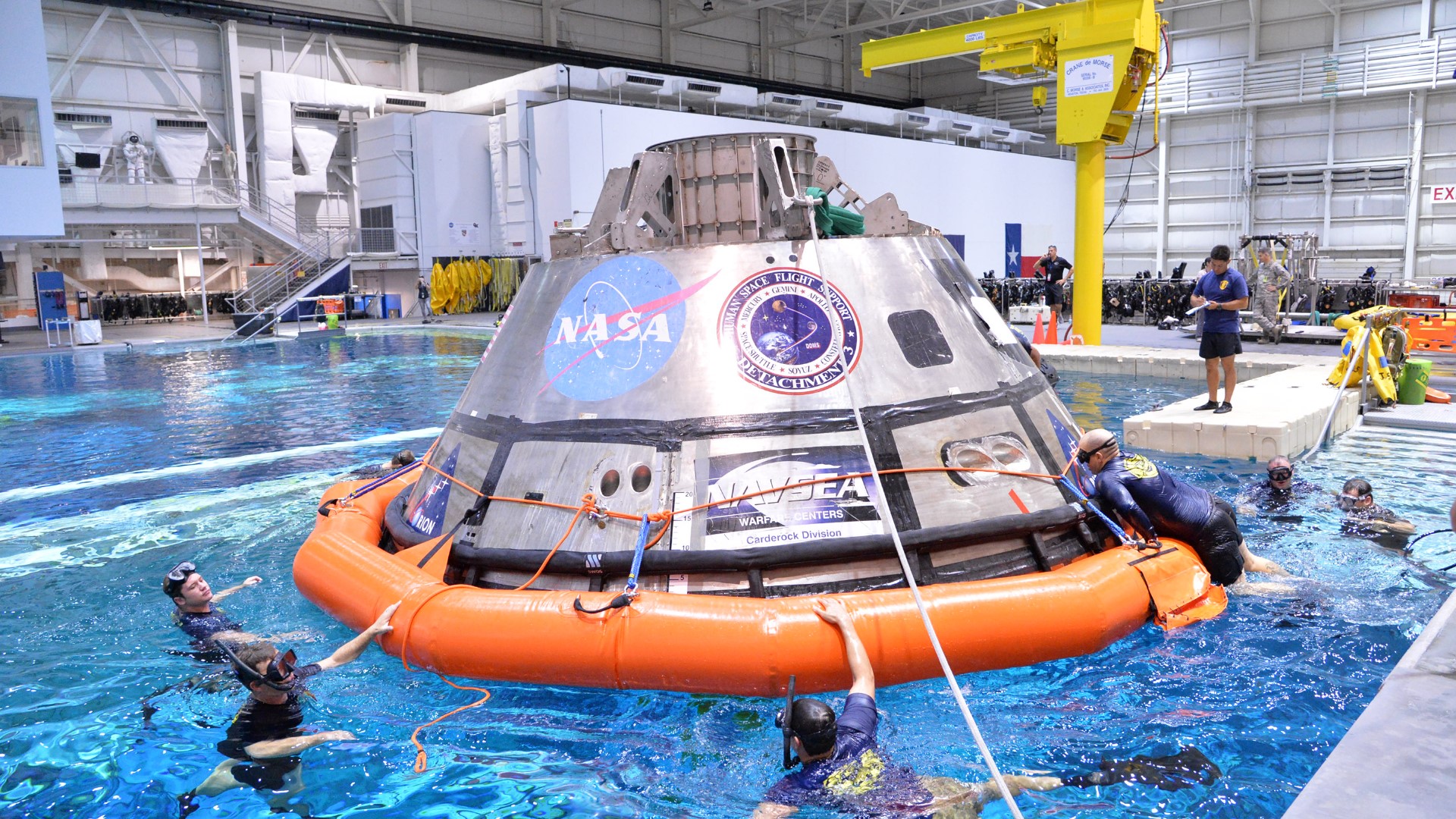
From the beginning A look at NASA's beginning to the future of space flight
In 1969 the United States became the first nation to put a man on the moon and return him safely to earth under the Apollo 11 mission. The following six missions all returned to the moon, save the ill-fated Apollo 13.
Since Apollo 17 left the moon in 1972, mankind has not returned, instead setting its sights on missions to low Earth orbit.
For NASA, there is a new directive: return to the moon and travel to Mars, reaching farther than humans have ever traveled.
“We have on our agenda, we are going back to the moon," NASA Administrator Jim Bridenstine said. “[Our goal is] having a sustainable presence on the moon, around the moon.”
In 1958 NASA took over the reins from its predecessor, The National Committed for Aeronautics. Early on, the young agency was tasked with catching up to early Soviet success in space.
First came project Mercury, to see if humans could even survive in the total vacuum of space. Project Gemini followed, laying the groundwork for NASA to eventually put a man on the moon.

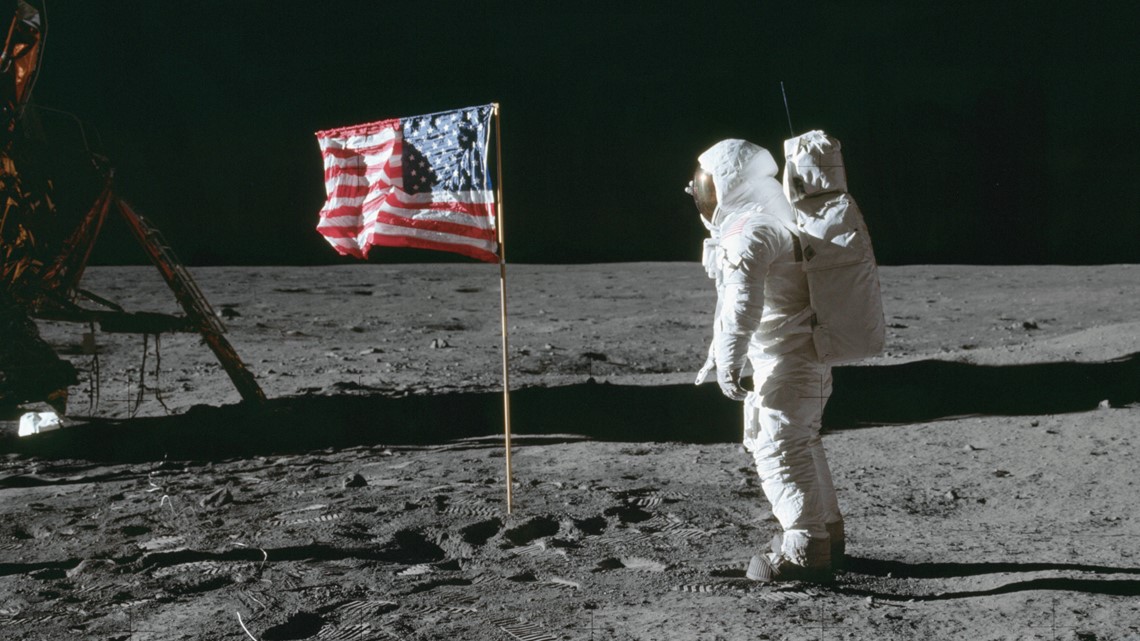
Despite the success of Apollo, NASA's focus shifted.
“While we all love Apollo and the history and the legacy that it left, establishing the U.S. as the preeminent space fairing nation, it is also true that in 1972, we came home and never went back," Bridenstine said.
In the following years, NASA celebrated success with missions like Skylab, the Apollo-Soyuz test and eventually the space shuttle.
After the completion of the International Space Station, NASA was asked to create plans for a permanent human presence on the moon, called Constellation. The program started to develop a new space craft and lay plans to return to the moon and travel to Mars, but it was cancelled in 2011.
Despite the cancellation, Constellation was not without its benefits. The crew capsule designed before the end of the program was called Orion, and it’s that capsule that will take Americans back to the lunar surface and eventually beyond.
Going back to the moon Artemis missions using capsule
From its first missions to space through the Apollo program, NASA used a crew capsule perched atop a Saturn V rocket to send its astronauts into the stars.
Everything changed in 1981, when NASA began using the space shuttle, but for Artemis, NASA instead decided to build on the work of the Constellation program and use the Orion capsule.

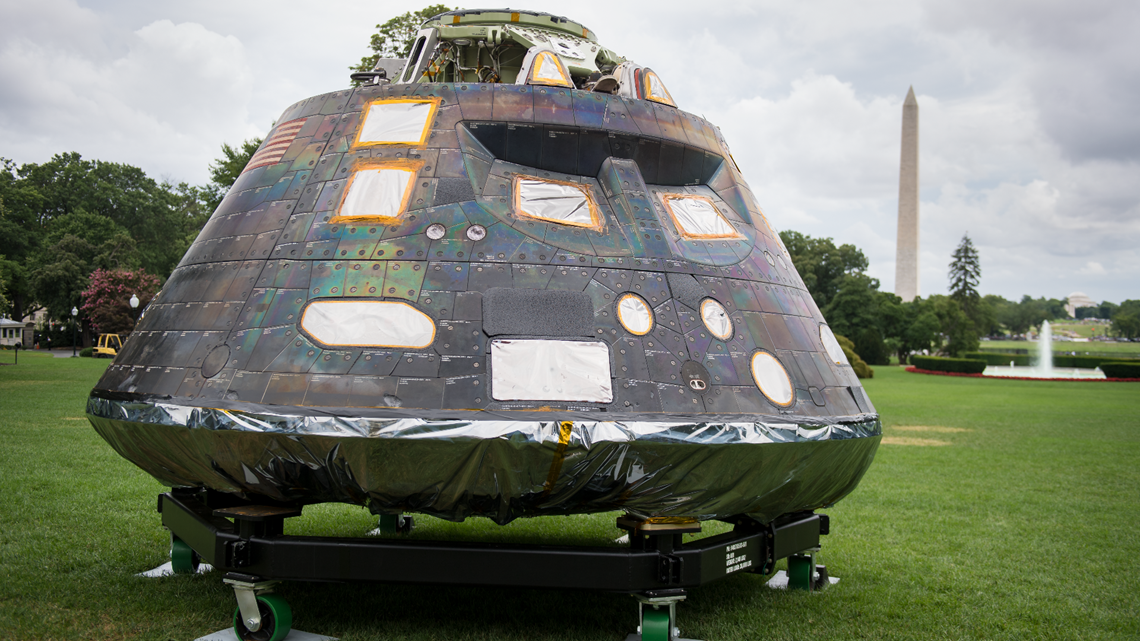
“I’ve heard that it's about 30% larger inside than the Apollo capsule, so there's more room for the astronauts to move around and of course, all of the new technology," said Amy Marasia, the crew module assembly and operations lead for NASA. “Once we get all the displays and controls in there for the astronauts, it’s not going to be all of the old switches that we had in the space shuttle. It's going to be touch screens, it's going to be more digital technology, so that will be exciting as well.”
The capsule has taken scores of people to plan and assemble. NASA is working with the European Space Agency as they build the service module, the part of the vessel that houses power and life support systems for Orion.
The process is deliberate and time consuming, as engineers and builders marry millions of parts together.
“The wonderful thing about getting to do something like this is there’s an engineer who’s gone to school for that," said Scott Wilson, Orion’s production operations manager. “It’s an amazing project to work on. There’s a thousand, a million parts and things that all have to work together.”
And it’s not just NASA creating the parts. They’ve contracted manufacturers from all 50 states, big and small, to provide parts and equipment.
“It's an incremental process. There are several components like your avionics, aviation guidance control, certain boxes that get tested at the vendor before they are shipped here and integrated into the vehicle," Marasia said.
For those building the capsule, service module and other parts of the system, having a direct connection to the next time people go to the moon is a dream come true, and even has some people delaying retirement.
“I've seen a lot of folks who want to get back to the point of having humans in space again and back to the moon,” Wilson said. “We're all excited and I know I'll keep pushing until it happens.”

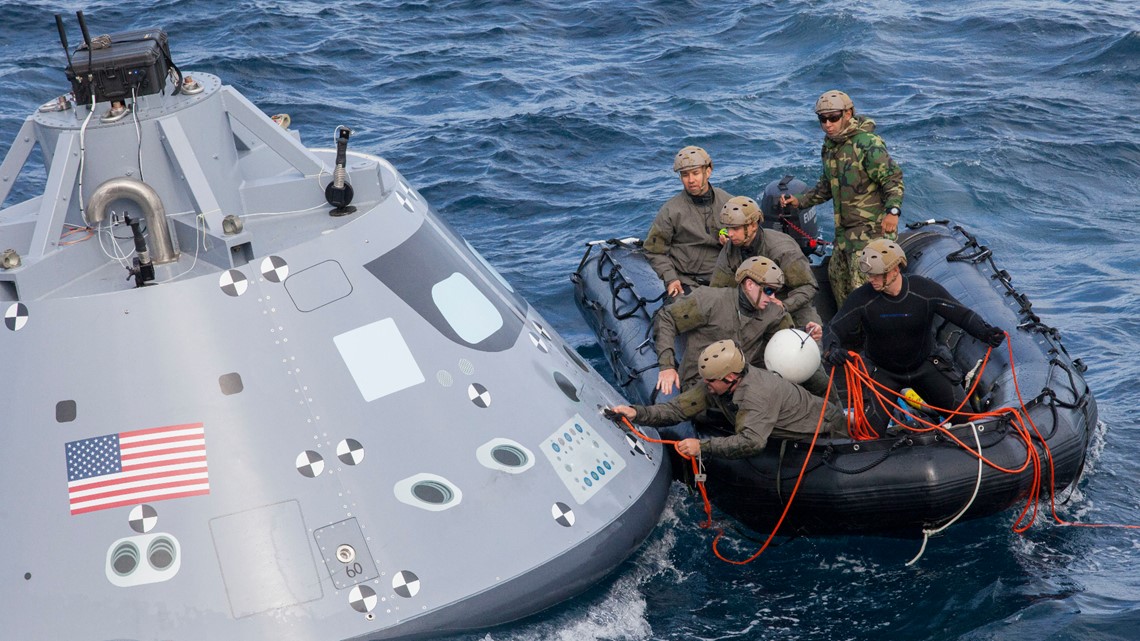
The road to space Ohio plays a critical role in getting back to space
If you’ve ever flown into Cleveland’s Hopkins International Airport, you’ve likely noticed dozens of buildings nearby marked with NASA’s iconic “meatball” logo. That’s the Glenn Research Center, where, among dozens of other things, engineers are developing revolutionary propulsion systems that will be used as part of the Artemis mission.

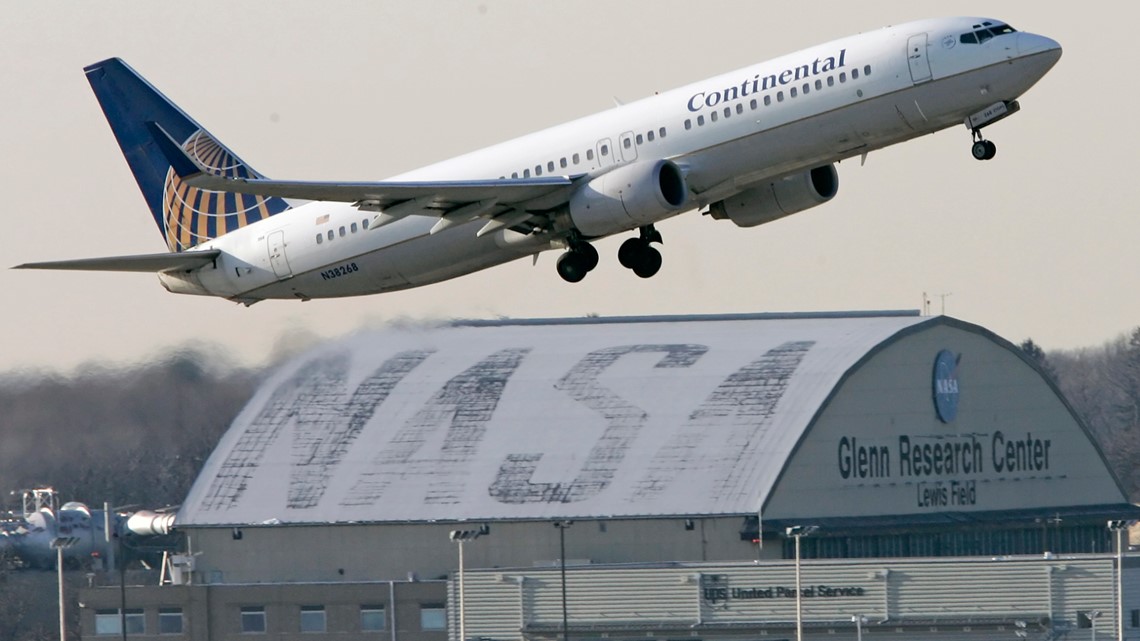
The success of flight, space exploration and life on Earth owes much to Northeast Ohio. NASA Glenn holds more than 425 patents alone, and engineers there have solved propulsion problems and developed the liquid hydrogen-liquid oxygen mixture that powered the Saturn V rockets.
However, tucked away in Sandusky is another facility, called Plum Brook Station, that is critical to NASA’s plan to return to space, as well as private contractors hoping to get there themselves.
“[It’s a] 12- or 13-square-mile section of Ohio farmland taken by the U.S. Army in April of 1941 to make a TNT plant," said Plum Brook Director David Stringer. “Three days after Pearl Harbor, they were making their first load of TNT.”


After the war, Plum Brook was idled until NASA took possession to build a reactor to assist with the development of nuclear power for space flight before it was idled a second time.
“In 1986 they began to reactivate this station because they wanted to test radiators for the ISS,” Stringer said. “They did, and we've been testing ever since.”
Deep inside the sprawling site is the Space Environments Complex, something that sets Plum Brook apart from any other NASA facility.
The complex is home to the largest vacuum chamber in the world, enabling the agency to test anything in the extreme environment of space on the ground.
“It's a real sports car. It can get down from normal Earth pressure about 14.7 PSI to half a pound per square-inch in two hours,” Stringer said. “We can get to a so-called hard vacuum in six more hours, so in eight hours, we are able to get from normal Earth pressure to space conditions.”
The vacuum chamber isn’t the only unique part of the Space Environments Complex. It also houses a massive shaker table and acoustic chamber, both designed to test articles to their limits as engineers prepare them for space flight.
“We're road testing it, or we're testing it on the ground because its much cheaper and easier, obviously, to test it on the ground that in low Earth orbit or beyond,” Stringer said. “This is a cheaper and easier way to do that.”
Those so-called road tests are among the most important for Artemis, because if an object fails here, it won’t survive the rigors of space.
Getting Orion to Ohio NASA relying on Super Guppy to transport to do its heavy lifting
Preparations are well underway in NASA’s Plum Brook Station for the two months of testing the Orion spacecraft will face once it arrives.
While the tests in Sandusky will be the “road test” for Orion, it will still have to take a road trip from Kennedy Space Center in Florida, where it’s being built, to Lahm Air National Guard Base in Mansfield, from where it will travel 50 miles by truck to Sandusky.
In order to get it there, NASA is relying on another unique piece of equipment, the C-97 “Super Guppy.”


The Guppy is a special modified plane that can carry oversized cargo all around the country. It’s flown parts for the space shuttle, the International Space Station and the Orion capsule. At the controls is NASA Glenn pilot Mark Russell.
"I flew an airplane that had some similarities to this in the Navy,” Russell said. “It was nature to come and support this program."
Even tough Russell has 22 years of flight experience, the massive plane isn’t easy to fly.
“This is humbling. That's how I felt the first time I flew it. And the first landing I had, it felt like a controlled crash."
Of the five remaining Super Guppies in existence, NASA’s is the only one still in service and was the last one built, coming off the production line in the early 80s. Because of that, the technology is a little behind the times.
There’s no on-board computer, meaning there’s no autopilot, and the latest technology on-board came from the 1990s.
Loading the Guppy isn’t a simple task either. That’s because entire nose swings open to allow the cargo to be lifted inside.
"We need to disconnect the flight control cables, disconnect electrical wires and things like that in order to open the nose,” said Super Guppy Program Manager John Bakalyar. “Then, once we load the payload, we close the nose back up and we have to remake all those connections."
Even with its oversized design, the Guppy will need to be modified to carry Orion. At 48,000 pounds the capsule is the biggest load the plane has ever carried and for the pilots, the trip is not a non-stop flight.
"We have to do multiple fuel stops, because you don't want to load the fuel tanks all the way up on the way just to save weight," explained Scott Wilson, Orion’s Production Operations Manager.
The flight to Mansfield on Nov. 19 won’t be the Guppy’s first. It brought other Orion parts for testing in 2015, but for those at the controls, every flight is a team effort.
“This airplane can stop really quickly because of all the drag,” Russell said. “You don't have to worry about critical length of the field to land. It's a ballet going on, with effectively priceless gear in the back."
For Russell, being at the controls also means he’s in elite company, because more people have piloted the space shuttle than the Super Guppy.
What happens when Orion arrives? Spacecraft faces 'road test' in Sandusky
Hidden among farm fields south of Sandusky is NASA’s Plum Brook Station, a former Army TNT site, repurposed by NASA as one of its most important test facilities.
This month, NASA will begin the long and rigorous test on the Orion capsule before it heads back to the Kennedy Space Center, and eventually to space.
Within Plum Brook is the Space Environments Complex and the biggest vacuum chamber in the world. Later this month the Orion capsule will roll into the chamber for two months of testing, but the vacuum chamber wasn’t always supposed to be for testing space craft.


“The systems were designed, especially the chamber, was designed a long time ago, and it was actually designed to handle nuclear rockets and power systems," said Space Environments Complex Facility Manager Bob Kowalski. “That's why it is the design it is today, and it was never used for [nuclear tests]."
So why bring a space craft worth millions of dollars all the way from Florida to Ohio? Why take the risk of damaging it? NASA says it’s all to make sure the craft can pass muster.
“The main purpose of the test is to make sure the Orion capsule and the service module can live up to how it was designed,” Kowalski said. “It's designed to shake out, it's a qualification test, so you're basically proving that it meets its requirements.”
The vacuum chamber will expose the capsule to the most extreme conditions it can face, from extreme temperature variations to vibrations and electromagnetic interference, each step carefully monitored by NASA.
“There are over 1,500 pieces of instrumentation that will go on this thing,” said Nicole Smith, the Orion project testing manager. “We pump all of the air out of the chamber and hold it like that for the entire duration of the test.”
After the test -- pass or fail -- the Orion capsule will be loaded back on a truck, back on to the Super Guppy and taken back down to Kennedy, where necessary repairs will be made, or it will be attached to the rest of the system, the service module and Space Launch System rocket, and prepared for the mission dubbed Artemis 1, set to launch in early 2020.
Using history to move into the future Artemis missions to launch from historic Pad 39B
When the Orion capsule and the rest of its system take flight in 2020, it will launch from a historic place at Cape Canaveral, Pad 39B, which has a long history when it comes to NASA.
The first lift off from the pad was Apollo 10. After that, more than 50 space shuttle missions broke the bonds of Earth’s gravity from there.

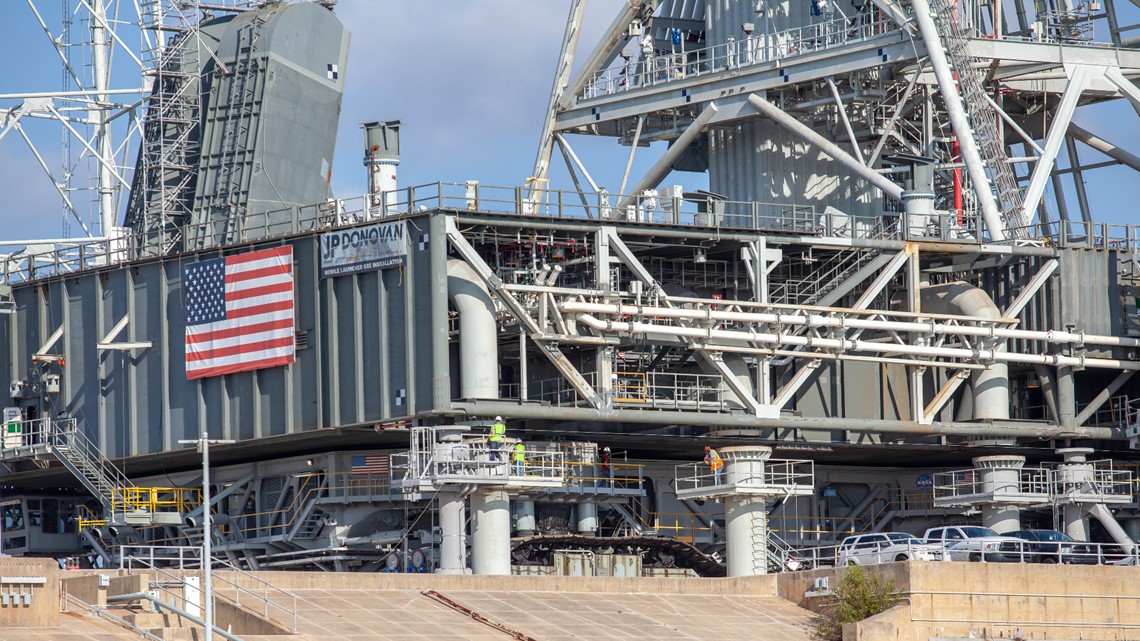
As the missions changed so have some parts of the pad, as some of the cladding in the flame trench that deflects flames away from the vehicle during launch has been replaced. Alongside the trench crews have replaced some 96,000 bricks and laid fiber optic cable. While some things have changed, others haven’t, including the bricks in the apron of the flame trench, which are the same ones that were there when Apollo 10 first took off, but are now pitted by years of launches.
Before any launch happens, each system must be tested multiple times, including the suppression system that pumps 400,000 gallons of water through the pad in just 25 seconds.
"Not only is it keeping the structure cool, but it is keeping the sound wave from the exhaust from the rocket from bouncing off of the mobile launcher reflect up off onto the vehicle and damaging the vehicle," explained Regina Spellman, a Senior Project Manager at NASA who is in charge of the pad.
And like so many others looking to the future of manned space flight, Spellman says the excitement is mounting.
"We have had two major chapters of human space flight from this facility and we have another one right on our heels. It's really exciting to learn from the giants that came before us."
Mission to Mars Looking ahead to what's next
Since NASA left the moon in 1972, many of its manned missions have been destined for labs for space station in low Earth orbit.
To aid their missions to the moon and Mars, NASA will build a permanent vessel that orbits the moon, called the Lunar Gateway.
While the design is far from final, companies like Boeing and Lockheed Martin are competing for the contract. The technology used on the Gateway was developed at NASA’s Glenn Research Center.
“The Gateway was a program that was developed here at Glenn, and is now under contract because of the great procurement professionals here at Glenn,” Bridenstine said.

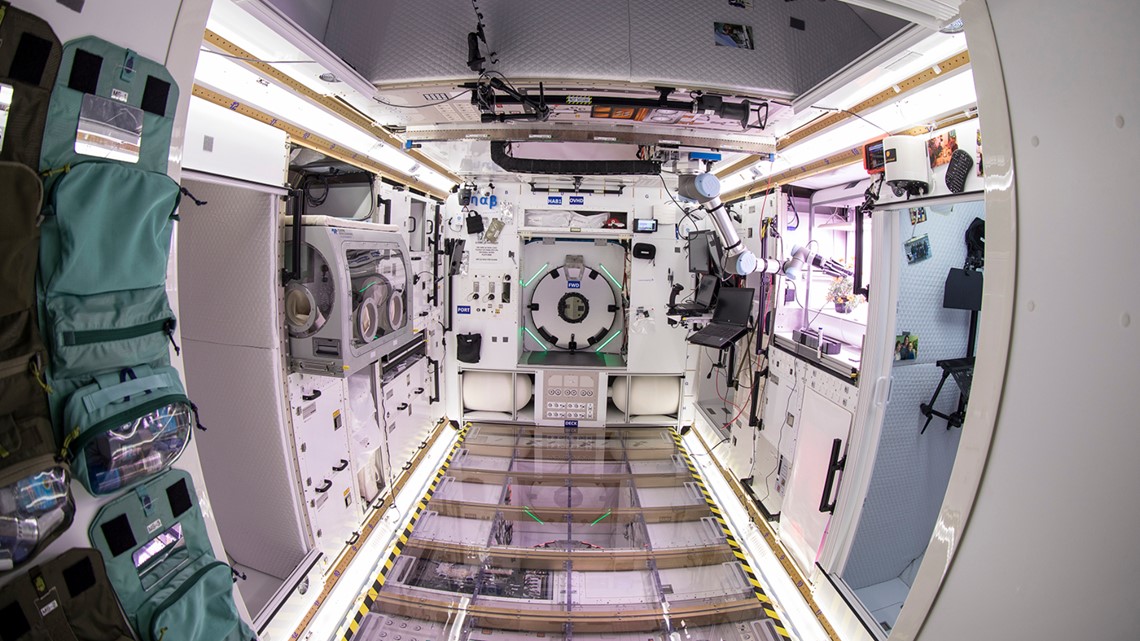
NASA’s plans for the Artemis missions include a permanent human presence on the moon aided by the Gateway which will orbit the moon, and, unlike other space stations, will able to change its orbit thanks to revolutionary engines designed at Glenn.
“This type of propulsion is about 10 times more efficient in terms of the fuel,” said Mike Barrett, the manager of power and propulsion at Glenn’s Electric Propulsion and Power Laboratory. “A lot of people are used to watching the space shuttle take off. Those engines generate a lot of thrust over a short period of time. The electric propulsion still provides propulsion for the space craft, but it produces a small of thrust.
Electronic propulsion is not a new technology, but since it can only be used in space, we rarely hear about it here on Earth. And while most ion engines have a relatively short life, the engines on the Gateway are designed to withstand 15 years of use without needing maintenance.



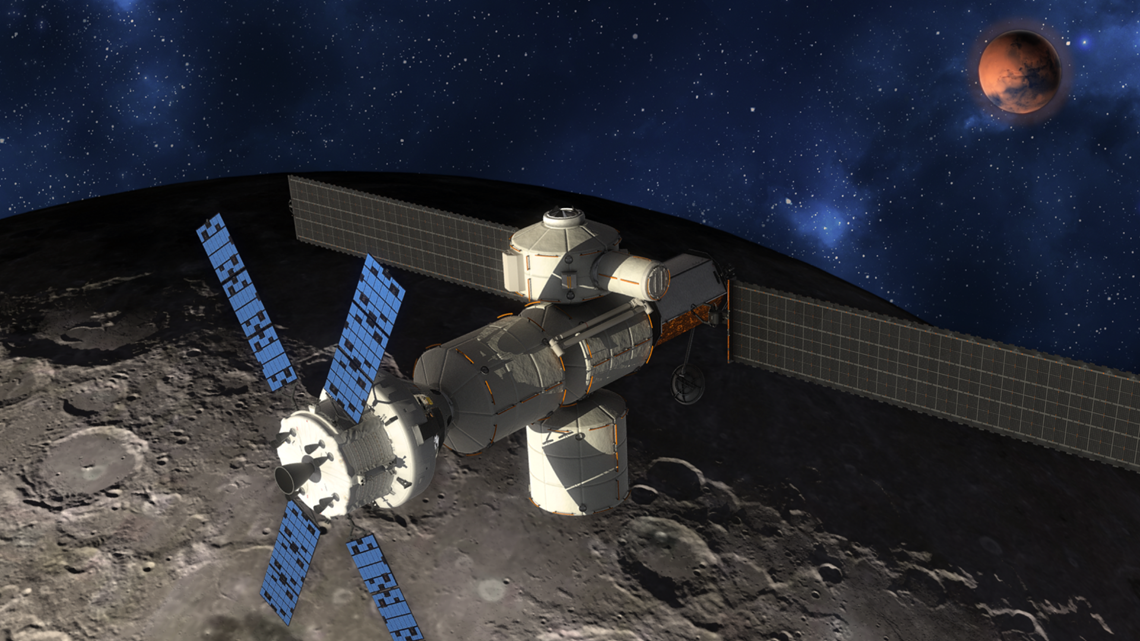
“This is about 10 times more efficient in terms of fuel,” Barrett said. “So gateway doesn't have to carry all that fuel with it to have a 15-year life. We can take a 10th of the fuel and still fulfill all of the needs.”
And while it seems like these powerful engines may provide a lot of power needed to move a craft like the Gateway, Barrett says it’s not as much as you may think.
“The newest technology is a 12 1/2 kilowatt engine, so a hairdryer is about a kilowatt. It doesn't seem like a lot of power, but when you put this system together on a space craft, it will run about 40KW of electric propulsion power. That's about three times what has been flown before on a spacecraft," Barrett said.
Re-watch our entire Orion special below:
